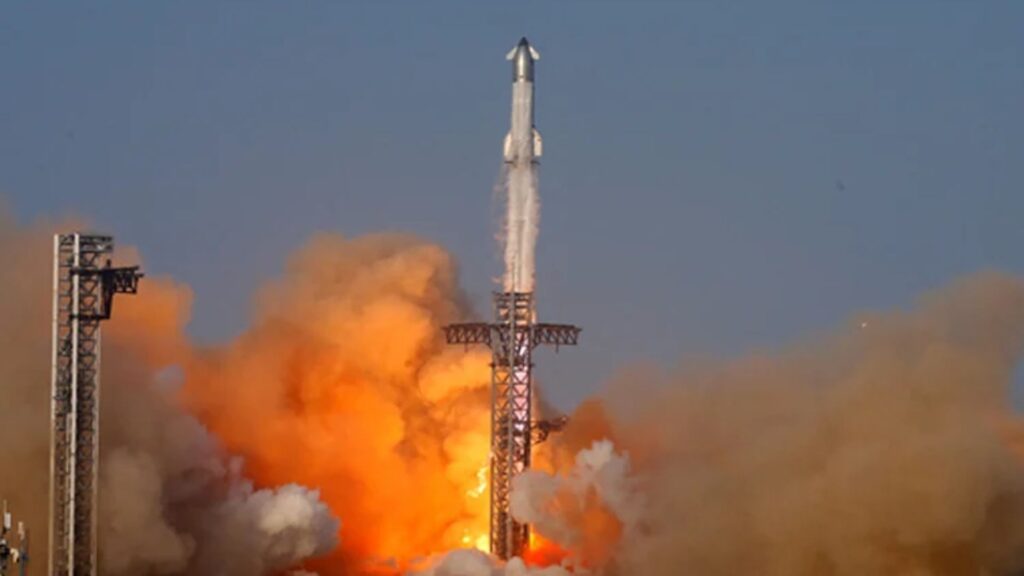A prototype of SpaceX’s Starship upper stage, designated Ship 36, was destroyed in a dramatic explosion during ground testing late Tuesday night at the company’s Starbase site in Boca Chica, Texas. The incident occurred at approximately 11 p.m. Central Time on June 18 (midnight ET, June 19), during preparations for a static-fire test of the vehicle’s Raptor engines.
Video footage captured by independent observers, including NASASpaceFlight.com, shows the vehicle erupting in a powerful blast while positioned on a test stand at Massey’s test site — a location several kilometers from the main Starbase launch complex. The explosion appeared to originate near the top of the vehicle, where header tanks used for landing maneuvers are located.
In an official statement released shortly after the explosion, SpaceX confirmed a “major anomaly” had occurred during the test sequence. “A safety clear area around the site was maintained throughout the operation and all personnel are safe and accounted for,” the company said. SpaceX added that it is working with local authorities to secure the site and that no hazards remain for the surrounding area.
The explosion is a significant blow to SpaceX’s Starship program, particularly as Ship 36 was slated to serve as the upper stage for the upcoming tenth integrated flight test, known as Flight 10. A notice issued by the Federal Aviation Administration (FAA) on June 18 had suggested that the launch could take place as early as June 29, pending regulatory approvals.
This latest incident comes amid a string of recent failures involving Starship upper stages. Flight 7 in January was cut short due to excessive vibrations that caused propellant leaks and fires. Flight 8, launched in March, failed during ascent following a malfunction in one of its Raptor engines, which triggered cascading failures in others. Most recently, Flight 9, launched on May 27, successfully reached space but suffered a propellant leak that led to loss of control during reentry, resulting in destruction of the vehicle.
Despite those setbacks, progress had been made on the Super Heavy booster component of the Starship system, which has successfully demonstrated return and “catch” maneuvers in recent tests. However, the explosion of Ship 36 suggests renewed challenges for the upper-stage development.
An industry insider present at the Paris Air Show, who reviewed footage of the explosion, commented that the Starship program seems to be “regressing,” noting that such explosive failures had not been seen since early stages of the vehicle’s development several years ago.
SpaceX has not released further details about the root cause of the failure. Investigations are likely to delay the timeline for Flight 10, with the company now facing renewed scrutiny as it continues to develop the fully reusable launch system central to its plans for Mars missions and other deep space exploration goals.

